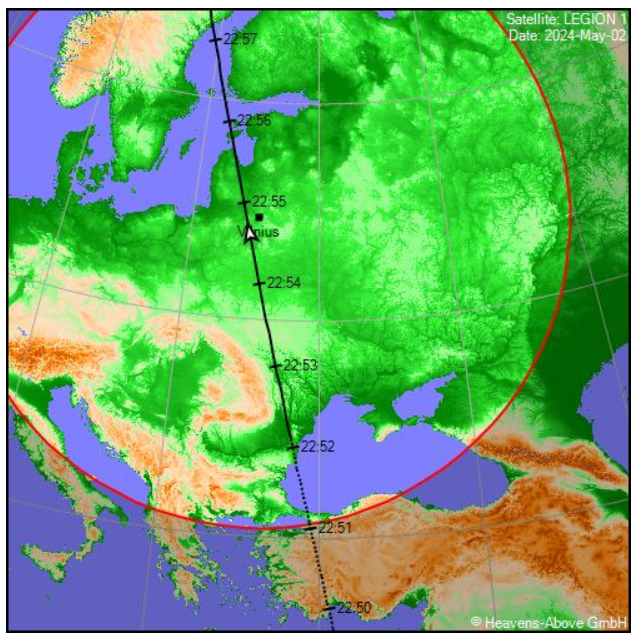Although you probably did see Falcon 9 it would not have been the launch itself but more likely the second stage deorbit burn which occurred after the Maxar WorldView Legion satellites were deployed. That's a hard thing to confirm with limited information, but I will go through some evidence that this is what you probably saw.
First of all your intuition is correct that you are not able to see Falcon 9 launches from Europe. For example when Falcon 9 launches from Cape Canaveral, SECO (second stage engine cut-off) occurs while the rocket is still over the Atlantic Ocean and still much closer to the U.S. than to Europe. This is when the launch vehicle and its payload reaches orbit, or at least an initial orbit. When launching from Vandenberg, SECO occurs over the Pacific Ocean even farther from Europe.
The SpaceX livestream for the WorldView Legion launch did not display a ground track like they often do, but this map of the exclusion zone for the launch indicates the direction that the rocket traveled as it left Vandenberg:

A SpaceX graphic from the webcast of the recent USSF-62 launch from Vandenberg on April 11, 2024 with a similar trajectory shows an example of where SECO occurs. As you can see it is still relatively close to the U.S. when it reaches orbit:

USSF-62 trajectory (SpaceX)
However whereas the initial launch to orbit can only be seen from a few hundred kilometers from the launch site, on-orbit burns including deorbit burns can be seen from any location in the world where they happen to take place.
Ground tracks for short-lived second stages are not usually available, or at least not easily obtained, however we can look at the ground track for the WorldView Legion satellites after their release and see that in fact they passed nearly directly over Vilnius at 10:55 pm local time (EEST) which was 80 minutes after the liftoff from Vandenberg.

WorldView Legion ground track (Heavens Above)
You didn't mention a time, but is this about when you saw the "slowly moving small galaxy"? If so there was a video posted by someone in Poland at nearly exactly the same time (9:55 pm CEST) showing the Falcon 9 second stage deorbit burn:


The video is a time lapse so it appears to be moving faster in the video than it actually appeared. If this is similar to what you saw, and if you saw it at this time, then it's almost certain that the slow moving glowing cloud that you saw was the Falcon 9 second stage deorbit burn.




